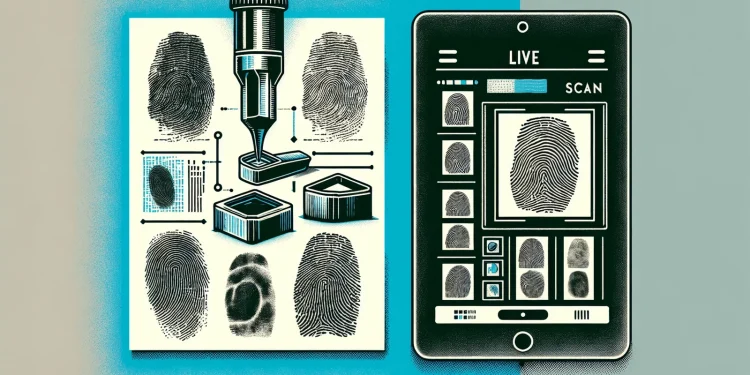Title: Live Scan vs. Ink Fingerprinting: What’s the Difference?

If you’re getting fingerprinted for a background check, you’ve likely come across two terms: Live Scan and ink fingerprinting. While both methods capture your fingerprints for background screening, they differ in technology, accuracy, and how quickly your results are processed.
In this post, we’ll explain the key differences between Live Scan and traditional ink fingerprinting, when each method is used, and which one might be right for your needs.
What Is Live Scan Fingerprinting?
Live Scan is a modern, electronic fingerprinting method that captures your fingerprints digitally. Instead of using ink and paper, your fingers are scanned by a biometric device and the prints are immediately transmitted to a government agency such as:
-
The Department of Justice (DOJ)
-
The Federal Bureau of Investigation (FBI)
-
State licensing boards and other authorities
Live Scan is commonly used for employment background checks, state licensing, and volunteer screenings. It’s the preferred method in many states, especially California, where it has replaced ink fingerprinting for most official purposes.
What Is Ink Fingerprinting?
Ink fingerprinting is the traditional method. Your fingers are rolled in black ink and then pressed onto a fingerprint card, which is mailed to the requesting agency. This method is still in use for certain federal forms, international applications, or when digital transmission isn’t available or accepted.
Agencies that may still request ink fingerprints include:
-
Out-of-state licensing boards
-
Federal agencies requiring FD-258 fingerprint cards
-
Immigration offices in other countries
-
Some foreign visa or passport applications
Key Differences: Live Scan vs. Ink Fingerprinting
Let’s compare the two methods side-by-side:
When Is Live Scan Required?
Live Scan is required in many situations where digital background checks are mandated. Common scenarios include:
-
Applying for jobs in healthcare, education, or government
-
Obtaining professional licenses (e.g., nurse, real estate agent, security guard)
-
Volunteering in schools or with vulnerable populations
-
Working with children, the elderly, or individuals with disabilities
In these cases, the requesting agency typically provides a Request for Live Scan Service form that includes an ORI number, which routes your prints to the correct department.
When Is Ink Fingerprinting Needed?
Although it’s less common today, ink fingerprinting is still required for:
-
Out-of-state licensing (e.g., you live in California but need a license in New York)
-
Federal fingerprint card submissions (FD-258 or SF-87 forms)
-
International background checks
-
Immigration and visa applications in certain countries
Tip: If you’re not sure which method is required, check with the organization requesting your fingerprints. Using the wrong method can delay your application.
Which Method Should You Choose?
The right method depends on what your requesting agency or employer requires. You can’t substitute one for the other—they serve different purposes and go to different places.
Choose Live Scan if:
-
Your fingerprints need to go to the DOJ, FBI, or state agency electronically
-
You are applying for a California state license
-
Your employer, school, or licensing board specifically asked for Live Scan
Choose Ink Fingerprinting if:
-
You are submitting an FD-258 fingerprint card
-
Your background check is for a federal or out-of-state agency
-
You’re applying for international immigration or travel visas
We Offer Both at [Your Business Name]
Not sure which one you need? No problem. At [Your Business Name], we offer both Live Scan and traditional ink fingerprinting. Our trained technicians will guide you through the process, ensure your fingerprints meet all quality standards, and get them submitted correctly—whether electronically or by card.
We also offer:
-
FD-258 fingerprint cards
-
Out-of-state submission support
-
Walk-in and appointment-based services
Final Thoughts
Live Scan and ink fingerprinting both play important roles in the background check process. While Live Scan is faster and more widely used today, ink fingerprinting remains essential in some legal, federal, and international scenarios.
Understanding the difference ensures your fingerprints are submitted correctly, saving you time, money, and the frustration of resubmitting due to errors. We recommend newport beach livescan.






